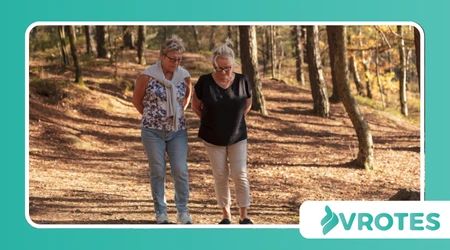Walking Plans to Increase Energy and Mood in Midlife

walking plans to increase energy. Many of us underestimate the profound impact a simple walk can have. It’s more than just putting one foot in front of the other.
Anúncios
Consider it a moving meditation, a chance to reconnect with your body and the world around you.The rhythm of walking has a calming effect on the nervous system.
This natural pacifier can significantly reduce stress hormones. Even a short stroll can shift your perspective.
Creating effective walking plans for midlife requires a personalized approach.
Forget the “one-size-fits-all” mentality often seen in generic fitness advice. Your journey is unique.
Anúncios
Start by assessing your current activity level and daily schedule. Honesty here is crucial for sustainable progress. Don’t aim for perfection; aim for consistency.
The Science of Strides: How Walking Transforms You
Did you know walking actively promotes neurogenesis, the creation of new brain cells? This crucial process contributes directly to improved cognitive function.
A sharper mind means more energy.
Furthermore, regular walking boosts circulation, delivering vital oxygen and nutrients. This internal refresh often translates directly to feeling more awake and alive.
It’s like tending to a garden; consistent care yields vibrant growth.
Crafting Your Personalized Walking Plans to Increase Energy
Building a successful walking routine isn’t about grand gestures. It’s about small, deliberate steps. Begin with achievable goals.
Perhaps a 15-minute walk during your lunch break is a great starting point. Gradually, you can extend the duration. Incremental progress is the key.
++ Pilates Moves to Alleviate Menopause-Related Back Pain
Varying your route keeps things interesting and engages different muscle groups. Explore new parks or neighborhoods. Fresh scenery invigorates the mind.
Consider incorporating inclines to challenge your cardiovascular system more effectively. Even small hills offer significant benefits.
Your body adapts beautifully to new demands.

The Mood-Boosting Magic of Movement
Beyond physical energy, walking is a potent mood enhancer
. Exposure to natural light, even on cloudy days, regulates your circadian rhythm. Better sleep means better mood.
Endorphins, those natural feel-good chemicals, are released during exercise.
These powerful compounds act as natural painkillers and mood elevators. Experience this natural high.
From Sedentary to Sprightly: Practical Strategies
Integrate walking into your daily routine seamlessly. Park a bit further away from your destination. Take the stairs instead of the elevator.
Walk while talking on the phone. These small shifts accumulate over time. Every step genuinely counts.
The Companionship Factor: Walking with Others
Walking with a friend can provide accountability and make the experience more enjoyable.
Shared experiences often amplify positive feelings. Consider joining a walking group.
Read more: Forest Bathing: Natural Stress Relief for Hormonal Imbalance
A recent study published in the journal JAMA Internal Medicine found that walking with others can significantly improve mental well-being and reduce feelings of loneliness, especially in older adults. Connection enriches every step.
Mastering Your Pace: Speed and Intensity
You don’t need to be a power walker to reap significant benefits.
A brisk pace where you can still hold a conversation is ideal. This ensures you’re challenging yourself without overexerting.
Interval walking, alternating between moderate and faster paces, can also be highly effective.
This technique boosts metabolism and cardiovascular health. Experiment to find what feels right.
Listening to Your Body: Avoiding Overtraining
While consistency is important, so is rest. Pay attention to your body’s signals.
If you’re feeling overly fatigued, a lighter day or a rest day is perfectly acceptable.
Pushing too hard can lead to burnout or injury. Sustainable progress is always the goal. Recovery is just as vital as activity.
The Mental Health Horizon: Walking as a Shield
Walking has proven benefits for mental health, often acting as a protective shield. It reduces symptoms of anxiety and depression.
Movement can be a powerful antidote to rumination.
Being outdoors, connecting with nature, further amplifies these benefits.
The sounds, sights, and smells of the natural world have a calming influence. Embrace the green.
A balanced diet provides the sustained energy your body needs for walking and recovery. Focus on whole foods. Good nutrition fuels good movement.
Overcoming Obstacles: Staying Motivated
Life happens. There will be days when motivation wanes. On those days, remember your “why.” Why did you start this journey?
Perhaps it’s for more energy to play with grandchildren, or simply to feel more vibrant.
Keep that purpose at the forefront. A small walk is always better than no walk.
Beyond the Steps: The Ripple Effect

The benefits of walking plans to increase energy extend far beyond the physical act. Improved energy translates to more engagement in hobbies and social activities.
A better mood impacts your relationships positively.
++ Plant-Based Remedies for Hot Flashes That Actually Work
This isn’t just about moving your body; it’s about moving through life with greater zest. It’s about unlocking a more vibrant version of yourself.
The Power of Routine: Embedding Walking into Your Life
Consistency transforms an activity into a habit. Aim for a regular time each day, even if it’s short.
Your body and mind will begin to anticipate this healthy ritual.
Consider walking first thing in the morning to set a positive tone for the day. Or use it as a wind-down activity in the evening. Find your rhythm.
Technology as an Ally, Not a Crutch
Fitness trackers can be great tools for monitoring your progress and providing gentle reminders.
They offer valuable insights into your activity levels. However, don’t become overly reliant on them.
The true measure of success isn’t just a step count; it’s how you feel. Your internal barometer is the most important metric. Listen to your body.
The Long Game: Sustainable Progress
Midlife vitality is a marathon, not a sprint. Be patient with yourself. Some days will be easier than others. The goal is long-term well-being.
Celebrate small victories along the way. Each consistent walk contributes to a healthier, more energetic you. Embrace the journey.
Financial Wellness Through Walking
Walking is one of the most cost-effective ways to improve your health.
No expensive gym memberships are required. Your best equipment is your own two feet.
This accessibility makes it a sustainable choice for everyone.
Investing in your health through walking is an investment that truly pays dividends. It’s accessible wealth.
Walking as a Form of Creative Expression
Sometimes, a walk is where solutions to problems emerge. The gentle, rhythmic movement can free your mind. It allows ideas to flow more easily.
Many writers and thinkers have used walking as a source of inspiration. It’s a canvas for your thoughts. Let your ideas wander.
The Midlife Metamorphosis: A Personal Anecdote
Consider the story of Ana, a 52-year-old marketing executive. For years, she felt her energy steadily decline, impacting her work and personal life.
She began with just 20-minute walks around her block daily, using walking plans to increase energy she found online.
Within three months, she was regularly walking for 45 minutes, her mood significantly lifted, and her focus at work sharpened.
She even started joining her colleagues for lunchtime strolls, something she would never have considered before.
Her transformation wasn’t sudden, but a gradual blossoming of vitality.
A Global Perspective on Wellness
In Japan, the practice of “forest bathing” (Shinrin-yoku), which involves simply spending time in nature, is widely recognized for its stress-reducing and mood-boosting benefits.
This culturally ingrained practice underscores the universal power of outdoor movement. It’s more than exercise; it’s an experience.
Embracing the Journey
Midlife is not a decline; it’s an opportunity for recalibration. Walking plans to increase energy offer a straightforward yet profound path to reclaiming your vitality.
It’s about consistent, intentional movement that nurtures your body, calms your mind, and elevates your spirit. Are you ready to step into a more vibrant you?
As a seasoned columnist specializing in Fitness & Movement for Midlife, I’ve seen countless individuals transform their lives through the simple act of walking.
It’s a testament to our innate capacity for renewal. These walking plans to increase energy are not just theoretical; they are a blueprint for tangible change.
Embrace this journey, one mindful step at a time. The path to increased energy and an elevated mood truly begins at your feet.
Frequently Asked Questions
Q: How quickly will I see results from a walking plan?
A: While individual results vary, many people report feeling more energetic and experiencing improved mood within a few weeks of consistent walking.
Significant changes usually become noticeable after 1-2 months.
Q: Is it better to walk in the morning or evening?
A: The best time to walk is the time you can consistently stick to.
Morning walks can boost energy for the day, while evening walks might help with relaxation and sleep. Choose what fits your schedule and preferences.
Q: Do I need special equipment for walking?
A: Not necessarily. Comfortable, supportive shoes are the most important equipment. Beyond that, comfortable clothing suitable for the weather is all you need.
Q: Can walking help with weight management in midlife?
A: Yes, absolutely. Regular walking burns calories and helps build lean muscle, both of which contribute to healthy weight management, especially when combined with a balanced diet.
Q: What if I have joint pain? Can I still walk?
A: It’s always best to consult with your doctor before starting any new exercise routine, especially if you have existing conditions like joint pain.
Often, low-impact activities like walking can be beneficial, but your doctor can provide personalized advice.
Read more: The Best 7-Day Walking Plan to Boost Energy Levels, Created by Certified Trainers
